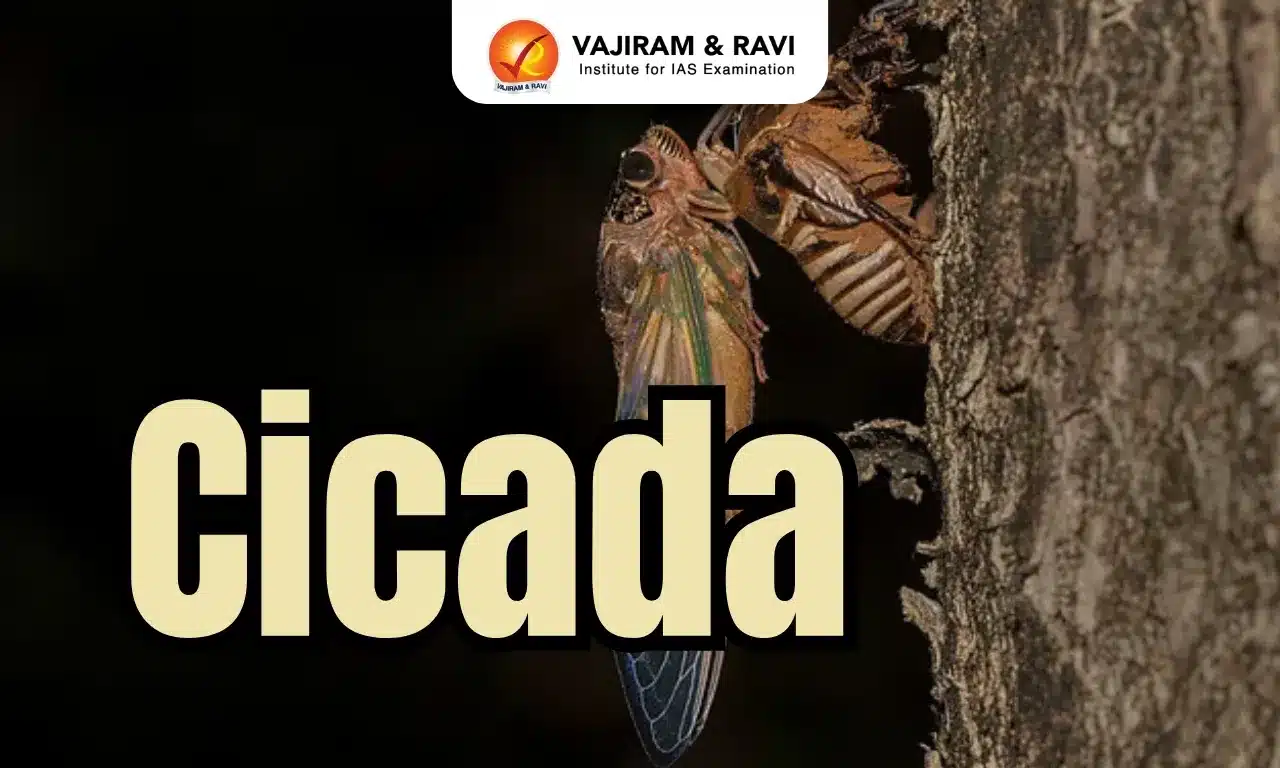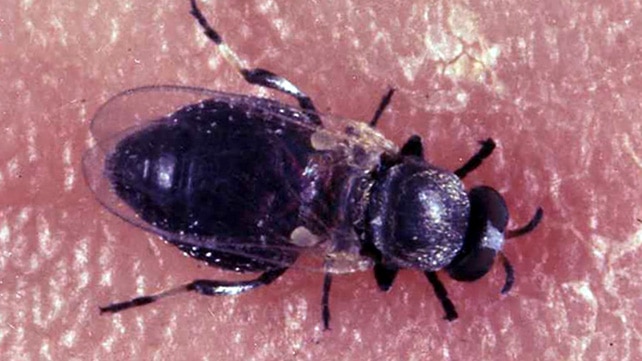Cicadas Latest News
Scientists with the Botanical Survey of India (MoEF&CC), Southern Regional Centre, Coimbatore, said that resurgence of cicadas in Silent Valley is a telling sign of ecological upheaval.
About Cicadas
- Cicadas are hemipteran insects known for their loud, complex and species-specific acoustic signals or songs.
- A cicada will have the best chance of survival if it can emerge from the ground when its predators are lying dormant.
- Cicadas are insects that spend most of their lives underground and emerge from the soil mainly to mate.
- Habitat: Most cicadas are canopy dwellers and are found in natural forests with large trees.
- Types: Scientists divide the over 3,000 cicada species into two groups: annual and periodical.
- Annual cicadas: They emerge from the ground at different times each summer.
- They’re usually dark with greenish markings.
- These insects avoid predators by camouflaging themselves in the trees and flying from hungry birds and moles.
- Periodical cicadas: Only seven species of cicadas are in the periodical cicadas.
- These bugs all emerge from the ground at the same time(Summer).
- These groups appear after a dormant period of either 13 or 17 years.
- Ecological Significance: They prune mature trees, aerate the soil, and once they die, their bodies serve as an important source of nitrogen for growing trees.
Source: DTE
Last updated on November, 2025
→ Check out the latest UPSC Syllabus 2026 here.
→ Join Vajiram & Ravi’s Interview Guidance Programme for expert help to crack your final UPSC stage.
→ UPSC Mains Result 2025 is now out.
→ UPSC Notification 2026 is scheduled to be released on January 14, 2026.
→ UPSC Calendar 2026 is released on 15th May, 2025.
→ The UPSC Vacancy 2025 were released 1129, out of which 979 were for UPSC CSE and remaining 150 are for UPSC IFoS.
→ UPSC Prelims 2026 will be conducted on 24th May, 2026 & UPSC Mains 2026 will be conducted on 21st August 2026.
→ The UPSC Selection Process is of 3 stages-Prelims, Mains and Interview.
→ UPSC Result 2024 is released with latest UPSC Marksheet 2024. Check Now!
→ UPSC Prelims Result 2025 is out now for the CSE held on 25 May 2025.
→ UPSC Toppers List 2024 is released now. Shakti Dubey is UPSC AIR 1 2024 Topper.
→ UPSC Prelims Question Paper 2025 and Unofficial Prelims Answer Key 2025 are available now.
→ UPSC Mains Question Paper 2025 is out for Essay, GS 1, 2, 3 & GS 4.
→ UPSC Mains Indian Language Question Paper 2025 is now out.
→ UPSC Mains Optional Question Paper 2025 is now out.
→ Also check Best IAS Coaching in Delhi
Cicadas FAQs
Q1. What is a cicada?+
Q2. What are the insect pests of hemipterans?+
Tags: cicadas

















